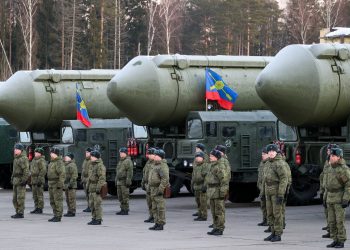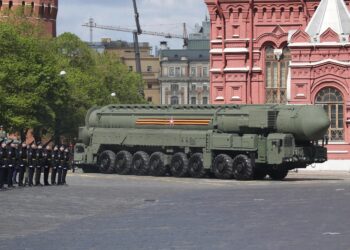U.S. AIR FORCE ACADEMY, Colo: Students and faculty at the Air Force Academy’s Chemistry Research Center are crafting a fast, environmentally friendly method of neutralizing chemical warfare agents using “ionic liquids,” that is, salts that take liquid form between 20 and 100 degrees Celsius.
People at the research center have been investigating ionic liquids and their applications since 1963.
“Ionic Liquids are physically stable (and) chemically stable, and they have this property I like to call ‘liquidus range,’ the range of tempratures at which they stay stable at as a liquid,” said Dr. John Wilkes, the research center director. “Once you have these materials — ionic liquids — you can start looking at applications of their properties: low volatility, wide thermal ranges, zero vapor pressure. That’s where we’ve been working for the last 15 years.”
Zero vapor pressure means an ionic liquid won’t evaporate, unlike an alcohol- or water-based compound.
“They’ll sit there in a puddle forever, and thus stay physically stable forever,” Dr. Wilkes said. That translates to an almost infinite shelf life.
Work in applying these properties at the Academy has found more than 40 applications for specific ionic liquids. These include applications as battery electrolytes, electrowetting to make lenses and thermal fluids to store or transfer heat. The latest addition to that list is the use of an ionic liquid to neutralize certain chemical warfare agents.
Through a grant from the Defense Threat Reduction Agency, cadets and Dr. Michael Wilcox, an Academy biology researcher, attempted to chemically convert specific chemical warfare agents into safer compounds. Substances being evaluated at the Academy are chemically identical to, but much less dangerous than, sarin gas, VX nerve agent and sulfur mustard gas.
“(The compounds) stink, but they won’t kill you,” Dr. Wilcox said.
The same can’t be said for sarin, VX or mustard gas. Sarin gas was used in the Aum Shinrikyo attack in a Tokyo subway March 20, 1995. They produced 2,000 pounds of Sarin gas and released five liters of the compound in five Tokyo subway locations.
“That’s plenty, since it only takes a drop to kill you,” said Dr. Wilkes.
The subway attacks killed 12 and injured more than a thousand people. Only Aum Shinrikyo’s poor dispersal methods prevented more fatalities.
VX is an odorless and tasteless nerve agent first created in the 1950s. Nerve agents are the most toxic and rapidly acting of the known chemical warfare agents, according to the Centers for Disease Control and Prevention. The United Nations has classified VX as a weapon of mass destruction.
Sulfur mustard gas goes back even further: the chemical warfare agent was first introduced in World War I.
Cadets found that certain ionic liquids can neutralize each of the three test compounds. Through informal market research, the cadets also discovered that the commercial manufacturing capability to create large volumes of these particular ionic liquids already exists and that manufacturers can produce the necessary compounds with a per unit cost equivalent to a gallon of unleaded gasoline.
The ionic liquids also offer a greener alternative to current decontamination options, as current technologies for chemical decontamination and demilitarization of these chemical warfare agents are not the most environmentally friendly. Bleach is one of the reagents used in the chemical conversion process, but bleach combined with the chemical warfare agent creates hazardous byproducts which, while being far less toxic than the original chemical warfare agent, create other issues such as groundwater runoff. Some chemical warfare agents can chemically embed themselves in certain paints and thereby deny reuse of contaminated equipment and facilities for lengthy periods of time.
The Academy staff has presented its results to DTRA. In the meantime, Academy cadets and researchers are conducting follow-on research, investigating the potential use of ionic liquids to neutralize biological contaminants.









